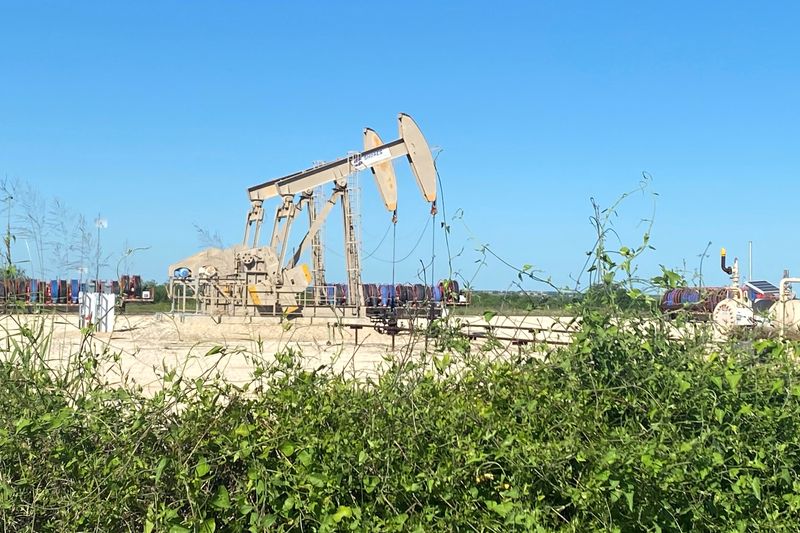Commodities
Oil rises on Red Sea jitters, ample supply weighs


© Reuters. FILE PHOTO: Oil pumps are seen, as oil and gas activity dips in the Eagle Ford Shale oil field due to the coronavirus disease (COVID-19) pandemic and the drop in demand for oil globally, in Karnes County, Texas, U.S., May 18, 2020. Picture taken May 18, 2
By Alex Lawler
LONDON (Reuters) -Oil rose on Monday as attacks by the Houthis on ships in the Red Sea raised concerns of oil supply disruptions, although scepticism around Russia’s plan to cut exports in December limited gains.
BP (NYSE:) has temporarily paused all transits through the Red Sea, it said on Monday, following attacks over the weekend by Houthi forces which control most of Yemen. Other shipping firms said over the weekend that they would avoid the Suez Canal.
futures were up 62 cents, or 0.8%, to $77.17 a barrel by 1150 GMT, while U.S. West Texas Intermediate crude rose 47 cents, or 0.7%, to $71.90.
Both crude benchmarks posted small gains last week, following seven weeks of decline, after a U.S. Federal Reserve meeting last week raised hopes that interest rate hikes are over and cuts are on their way.
“The rise in geopolitical risk premium, which has come in the form of regular hostilities towards commercial vessels in the Red Sea by Iran-backed Houthi rebels plays its indisputable part in oil’s resurrection,” said Tamas Varga of oil broker PVM. said Tamas Varga of oil broker PVM.
Also adding support, Russia said on Sunday it would deepen oil export cuts in December by potentially 50,000 barrels per day or more, earlier than promised, as the world’s biggest exporters try to support global oil prices.
This comes after Moscow suspended about two-thirds of loadings of its main export grade Urals crude from ports due to a storm and scheduled maintenance on Friday.
Still, PVM’s Varga was sceptical of the extent to which Russia will make voluntary output cuts.
“In reality it is just re-packaging weather-related halts in exports,” he said.
Commodities
Oil prices rise; U.S. crude inventories plunge, Russia-Ukraine truce eyed
Commodities
India’s Reliance to stop buying Venezuelan oil over US tariffs, sources say
Commodities
Oil prices climb on Venezuela supply worries

 Forex3 years ago
Forex3 years agoForex Today: the dollar is gaining strength amid gloomy sentiment at the start of the Fed’s week

 Forex3 years ago
Forex3 years agoUnbiased review of Pocket Option broker

 Forex3 years ago
Forex3 years agoDollar to pound sterling exchange rate today: Pound plummeted to its lowest since 1985

 Forex3 years ago
Forex3 years agoHow is the Australian dollar doing today?

 Cryptocurrency3 years ago
Cryptocurrency3 years agoWhat happened in the crypto market – current events today

 World3 years ago
World3 years agoWhy are modern video games an art form?

 Commodities3 years ago
Commodities3 years agoCopper continues to fall in price on expectations of lower demand in China

 Economy3 years ago
Economy3 years agoCrude oil tankers double in price due to EU anti-Russian sanctions

























